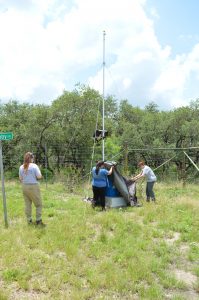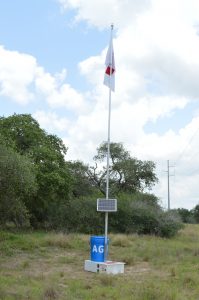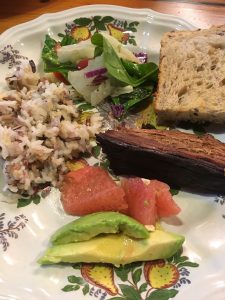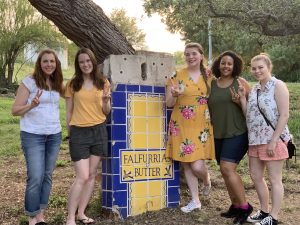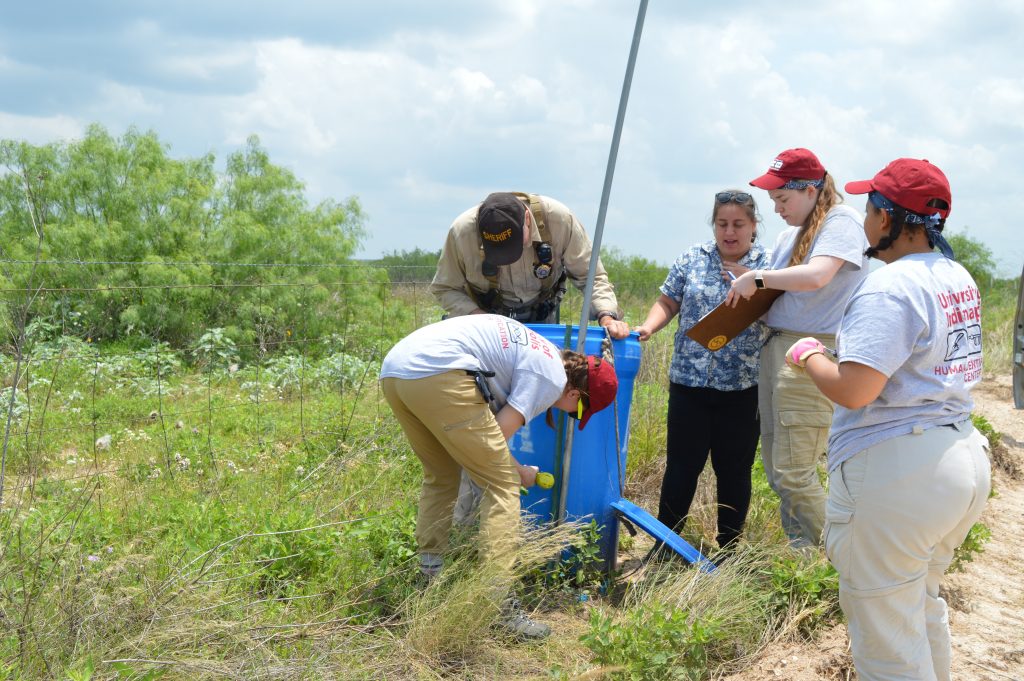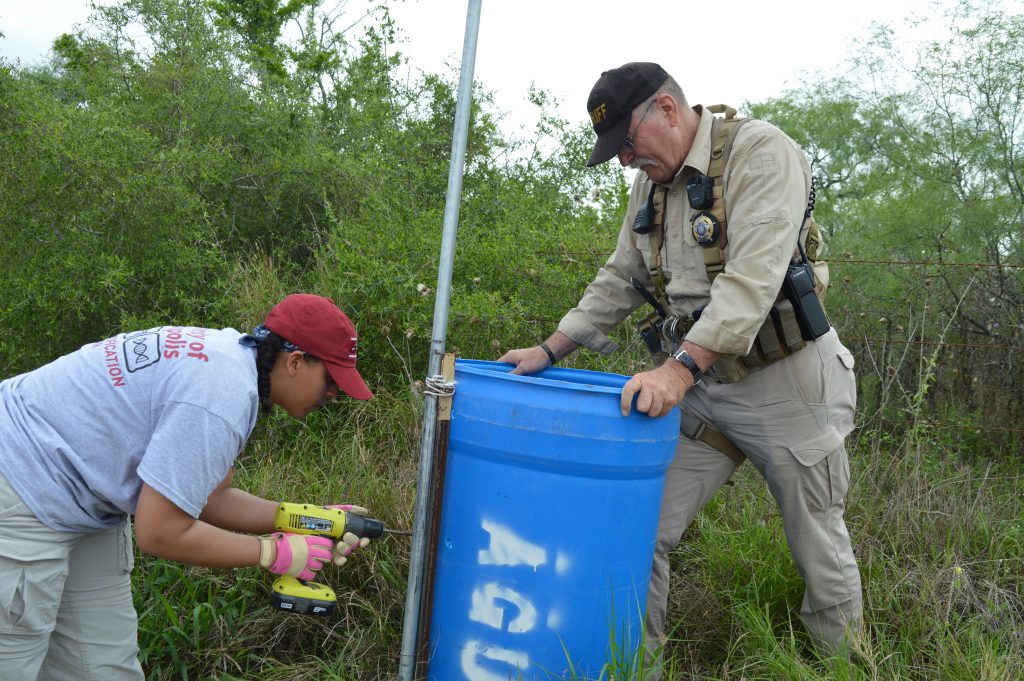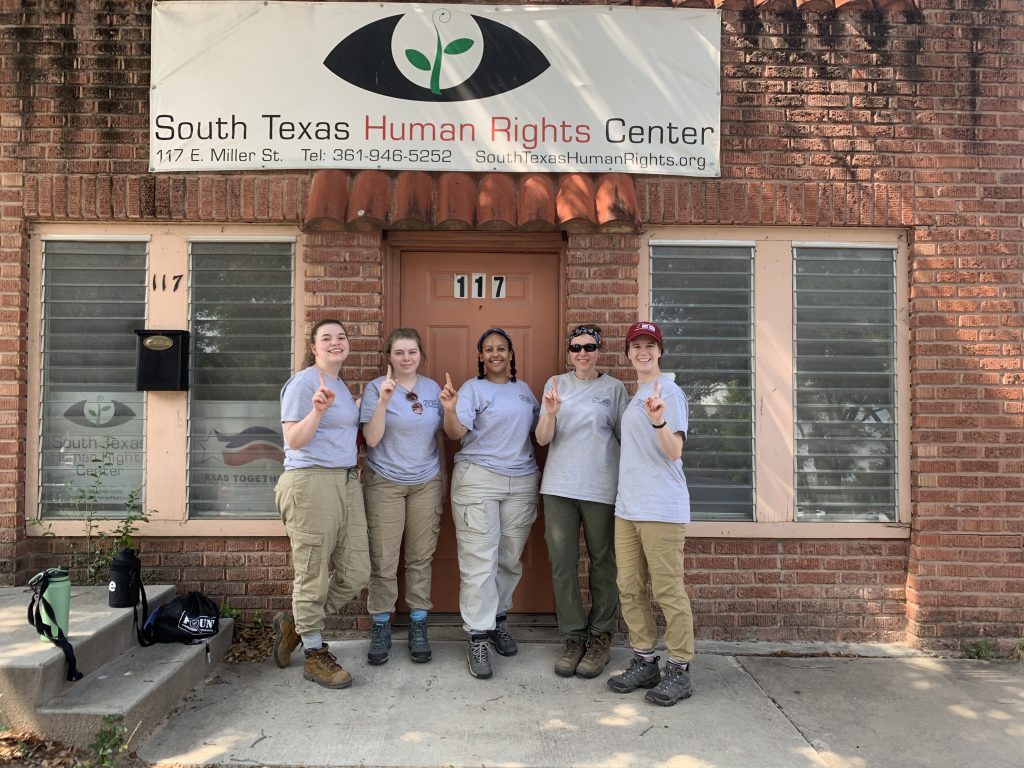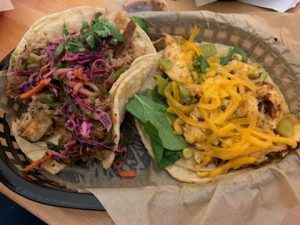Our second day started as normal: waking up, eating breakfast at the hotel, and meeting Arianna at the South Texas Human Rights Center. Since we spent most of yesterday attending to water stations, we have gotten into a groove. My main role has been the note taker. At every station, I note which station we are at, how many good gallons of water were left, how many spoiled gallons were found, and how many we leave behind. We also note any evidence of human activity (trash, footprints, etc) or any repairs we perform.
At one point, we were about to head to a station on a path our rental van couldn’t reach. Dr. Latham parked the van on the side of the road and we all squeezed into the truck. We made the water drop fairly quickly, and started back. When we were almost back, we saw a Texas Highway Patrol car pulled up behind our van. Dr. Latham and Arianna got out of the truck to figure out what was happening. Apparently they had watched us all get into the truck and drive off, and waiting to see what we had in our van. They saw our water and cooler and thought we were partaking in either a pick-up or drop-off migrants. They ran our plates and even took Dr. Latham’s information. Thankfully, they believed us when we said we were simply filling water stations, and sent us on our way.
We finished the last of one of the routes we started yesterday, and headed back to the center. There, we met a group of engineering students from Trinity University who have been working to design new water stations for the center. These stations are solar powered and transmit a satellite signal of the weight of the barrel, so that they are able to tell how many gallons of water are in each station without someone having to drive all the way out to the station. They also have a drawer for first aid supplies and the ability to charge cell phones. They are still working out the kinks in the systems, but they currently have two prototypes on a route that they are field testing in a place they can get to often and easily.
While we were at the center, a familiy member of a missing person, Byron, came to join us. He has a cousin who went missing in Falfurrias, so he often comes to town from out of state to search, get updates, and to help however he can. He went out with everyone after a quick lunch to the route where the field prototypes are. While the Trinity students tried to fix the glitches in their programming, the rest of us ran the route they were on and filled more water stations. At our last station, we were met by the ranch manager. He is familiar with both Arianna and our team, he stopped to chat and said he would fumigate near a specific station because there was a family of scorpions living there.
We finished the route, and the engineers fixed their programming issues, and we headed back to the center. Our role then was to be the trainees on how to build the new stations. Selina of the STHRC was filming, and the students taught Arianna and ourselves how to put one of the new stations together. This way, when there are different volunteers, Arianna can be sure to assemble them correctly. There are a lot of wires and different parts involved, so it’s more complicated than the normal ones. The hardest part was raising the flag pole: they are heavy, tall, and if any wires get pinched the whole station won’t work. Thankfully, we built two without problem!
After we were finished, we headed back to the hotel to get cleaned up for dinner. We drove to La Mota, where Peggy and Bill Clark live. Getting to visit them is my favorite part of our trips here. I’m not sure why, but something about their home is so inviting and warm that it makes it seem like you are just down the street from your own home, not hundreds of miles away.
Before dinner, we all sat and talked a little. Bill told us stories of when he was a big game hunter and how he has many skulls from his excursions. We sat down to dinner, and Peggy prayed over us and the food. While I am not religious, the genuine emotion of her prayer was moving. We then ate a wonderful dinner of brisket, rice, salad (with Peggy’s homemade dressing), grapefruit and avocado, and bread. It was so nice to have a home cooked meal after eating out for every meal since we’ve been here.
We cleaned up the plates, and had some ice cream for dessert. We left after a while, making sure we had enough time to debrief at the hotel and get things set for another early day tomorrow.
— Sidney
